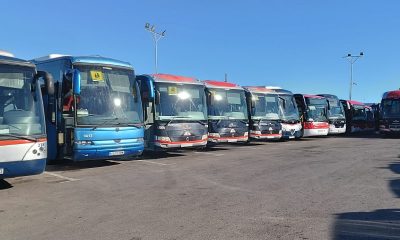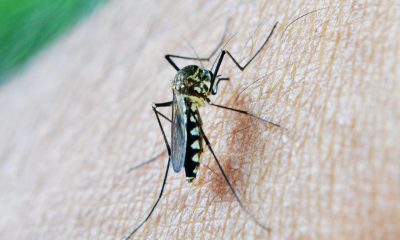News
The Vega Baja only recycles 402 tons of organic waste per year

According to data from the Vega Baja Sustainable Consortium for the 2024 financial year, approximately 400 tonnes of organic waste, which accounts for only 0.2% of the 190,000 tonnes of household waste generated by the 27 municipalities of Vega Baja, are separated from the rest of the rubbish for recycling at the recovery plants.
This insignificant percentage positions recycling at source in Bajo Segura light years away from the objectives established by European, state, and regional legislation, which specify what should not be buried in authorised landfills and recovered. The regulations stipulate that it should constitute 55% of the total by 2025, increasing to 60% by 2030 and 65% by 2035.
The brown container, which is indispensable for the efficient collection of selective refuse, is not a mere whim of environmental consciousness. It is also a highly practical and economically sustainable issue. It is estimated that approximately 40% of household refuse is organic waste. In the case of the Vega Baja, this would amount to 76,000 of the 190,000 tonnes of waste collected annually.
Modern disposal facilities can recycle a portion of the residual fraction; however, the organic fraction is the most critical. The economic interest of the industry that uses these materials for packaging would substantially reduce waste generation and, as a result, the costs of its disposal and transportation if the total weight reduction is achieved by recycling paper, cardboard, glass and plastic, which have high percentages of reuse circuits.
A situation that would, in turn, enable a decrease in the tax revenue collected, which is already being experienced by all residents of Vega Baja.
All decomposable refuse, including food scraps, vegetables, fruits, meat, fish, eggshells, and nuts, is included in the organic waste category. In the majority of municipalities, these wastes are now disposed of in the residual waste receptacle, also known as the grey container, and are not eligible for recycling.
However, the organic fraction can be recycled into compost for agricultural and other purposes if it is separated and its contents do not contain a significant amount of unsuitable material, such as other non-organic remains. The most significant aspect is that it would not require landfill disposal.
A statistic that substantiates the degree to which municipalities disregard the brown bin: Dolores, a municipality with a population of just over 8,500, recycles 207 tonnes, which is more than half of the total for the region. The implementation of a door-to-door collection system in nearly the entire municipality is producing positive results, despite the fact that it was not without controversy. The municipality’s dedication is the reason for the minor improvement in the dismal 2023 record, which saw only 30 tonnes of waste recycled at the regional level.
In 2024, an additional 105 individuals will originate from Torrevieja. This is a significant increase. The municipality that generates the most waste in the region, accounting for nearly 25% of the total 190,000 tonnes of household waste in the Vega Baja, has a resident population that multiplies during the tourist season and exceeds 100,000 registered inhabitants. The total waste generated is 49,000 tonnes.
An awareness campaign in schools, which removes organic waste from cafeterias, and a second, very limited, campaign among local hospitality businesses, which distributed tiny brown containers, are the sources of this organic waste record. In the city’s over 600 restaurants and cafes, these containers recycle only a small portion of this form of waste.
At the same time, the recycled organic fraction counter in Orihuela, the other significant generating municipality in the region, which collected over 45,000 tonnes of waste in 2024, remains at zero. The municipal service of the City Council, which has been precarious for more than a decade, is currently anticipating a decision to renew it.
Rojales, with 64 tonnes of selected organic waste, follows Dolores and Torrevieja on the select list of municipalities that are endeavouring to comply with the legislation. This is also a negligible amount for a municipality with 20,000 residents that annually collects 9,000 tonnes of refuse from its streets. Another company that claims credit is Daya Vieja, which accounts for 6% of its production with 17 tonnes. The gate has been partially implemented in this municipality, which has a population of little more than one thousand and is the smallest in the region. Granja de Rocamora and Formentera del Segura also exhibit nearly identical figures.
The 2025 balance sheet should include Albatera, Redován, and Almoradí by the end of the year. This could significantly increase the figure, although it is still clearly insufficient as long as Torrevieja, Orihuela, Pilar de la Horadada (14,000 tonnes of waste collected annually) and Guardamar del Segura (another 9,600) do not participate.
The Vega Baja Sustainable Consortium anticipates that these figures will progressively rise. However, the implementation of the regional waste treatment plant is presently being processed, albeit with some difficulty, as a benchmark for the “leap” in compliance with waste legislation, in which Vega Baja consistently fails to comply with record-breaking regulations at the state level.
Discover more from Costa Blanca Daily
Subscribe to get the latest posts sent to your email.
Costa Blanca
Vega Baja will have the first open seismic network in the province of Alicante

The installation of the province’s first open seismic network will position in the Vega Baja at the vanguard of seismic research in Alicante. The real-time detection of both perceptible and less intense earthquakes will be facilitated by this project, which is being led by researchers Nahúm Méndez Chazarra (UV/UA) and Carlos García-Saura (UAM) and is being promoted by the Mastral Project. This will substantially enhance the understanding of seismic activity in the region.
The initiative was recently introduced at the European Geosciences Union Congress, which was held in Vienna. This event is one of the most significant scientific events in the field of Earth sciences on a global scale. This inventive development, which originated in the region, was the subject of study for over 20,000 researchers.
As evidenced by the catastrophic Torrevieja earthquake of 1829, the Vega Baja is one of the regions with the highest seismic risk on the Iberian Peninsula. The objective of this network is to enhance the accumulation of seismic data, as well as to cultivate a culture of prevention against potential earthquakes and increase public awareness.
The Mastral Project will facilitate the installation of seismometers and the dissemination of the collected data by providing logistical support through the use of its meteorological stations. This will contribute to a more accurate and accessible monitoring of seismic activity in the region.
Discover more from Costa Blanca Daily
Subscribe to get the latest posts sent to your email.
Costa Blanca
Torrevieja puts out to tender urban transport service after 13 years without a contract
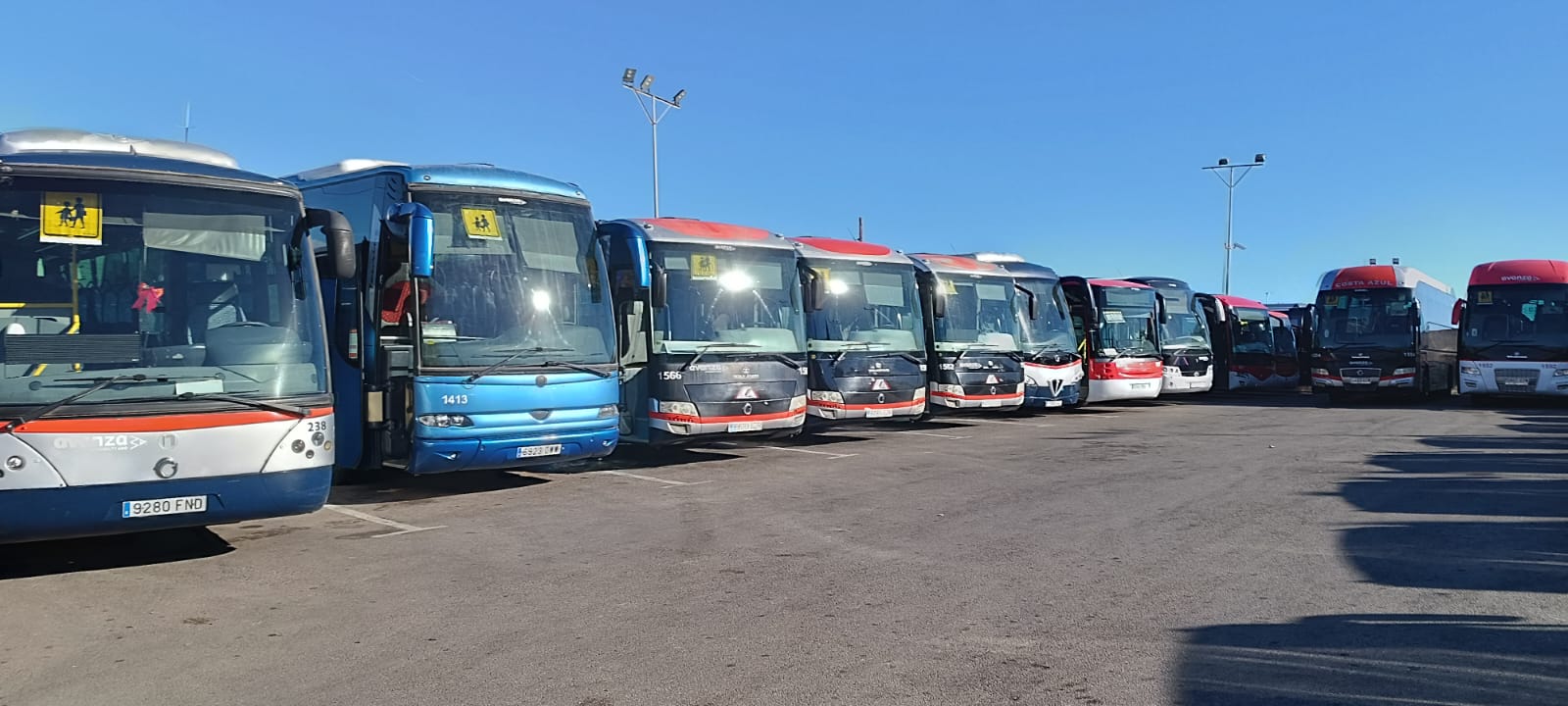
Yesterday, Tuesday May 6th, the Torrevieja government authorised the tender for a new urban transport service contract, which is a 10-year concession for a total of €115,440,005 (plus VAT). Since 2012, the service has been rendered without a contract, and audit reports have been virtually automatic as a result of administrative irregularities in the payment of invoices, which amount to approximately €260,000 per month.
In fact, it has been a commitment of Eduardo Dolón’s since he regained the mayoralty in 2019, but it has not been implemented in six years. These contracts, in addition to two other significant contracts, are currently in progress, including waste collection and street cleansing, as well as park and garden maintenance.
The mayor stated that “a significant stride has been taken in the finals of the major services that remained to be awarded.” This project will entail the modernisation of a service that was previously provided under conditions that did not meet our expectations. We are now proposing a modernised service that will significantly increase the parameters of frequency, punctuality, quality, and user comfort, as well as the digitalisation of the service. Additionally, we are committed to reducing emissions and demonstrating our dedication to the environment.
The deadline for proposals is mid-June, and the bid evaluation period will commence in July, unless appeals are submitted. The bid submission period will be 40 calendar days from the tender announcement. As a result, the mayor expects to award the service this year and start providing it by the end of the year.
Increased fleet and workforce
Antonio Vidal, the Councillor for Transport, clarified that the new service results in an increase in the number of employees. Specifically, the government’s dedication to sustainable mobility through low-emission vehicles, with reduced fossil fuel consumption and a substantial reduction in pollution levels, is evidenced by the fact that the number of buses has doubled, from 16 to 32 units (26 hybrids and 6 electric). A driver assistance system will be installed on all buses to enable the concessionaire and users to access real-time information about incidents, service schedules, and routes.
The number of employees has more than doubled, with an estimated workforce of over one hundred professionals, rather than the current 41.
Three nocturnal lines and nine daytime lines
The total number of lines has been increased to nine, with the addition of six new lines: the circular line, the hospital line, the Torreblanca-La Mata-Quirón Hospital line, and three night lines. These lines will provide coverage for high schools, health centres, weekly markets, and cemeteries in both Torrevieja and La Mata, as well as the northern and residential areas.
In addition, the hours will be extended to 7 a.m. to 10:30 p.m. during the low season and 7 a.m. to midnight during the peak season. Night services will be available on Saturdays during the low season, Fridays and Saturdays during the mid-season (June and September), and daily during the peak season.
Fees
Until recently, the standard ticket was free for registered residents who requested it, but it now costs €1.50. The incorporation of the CPI has resulted in a 10% increase in comparison to the City Council’s initial fare calculations for 2021. This is a noteworthy point.
Various ticket categories will be available. The Gold Pass provides unlimited free travel on urban transport throughout the year for individuals over the age of 65, pensioners, or those with a disability that exceeds 33%. In both cases, the prerequisite is that the individual has been a registered resident of the city for a significant period of time.
The special multi-trip bus pass is available at nearly 50% discount for young individuals under 26, large families, and the long-term unemployed (more than two years).
The 30-pass is a fare that is applicable for all users and provides unlimited rides on all lines of urban transport for a period of 30 days. It is priced at 44 euros.
The tourist card is a fare that entitles tourists and travellers to unlimited use of urban transport lines for the specified duration: three days for a fee of 10 euros, and seven days for a fee of 18 euros.
The multi-trip bus pass is a reloadable card that is priced at 11 euros for 10 journeys or 22 euros for 20.
All passes include free transfers for a 60-minute period.
To achieve this objective, the City Council will allocate 8 million euros annually.
The councillor declared, “A fare system that is fair, affordable, and tailored to the service to be rendered.”
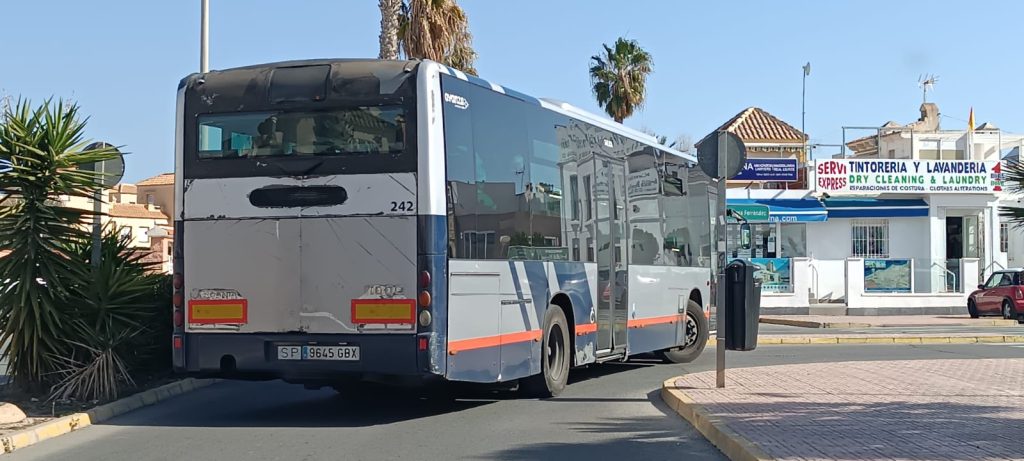
The successful bidder is required to supply 26 hybrid buses and six electric buses. The successful bidder is obligated to provide all 32 vehicles within a 12-month timeframe, with the initial deliveries occurring four months after the contract enters into force.
The City Council has previously awarded these vehicles through a tender process. The successful bidder is required to deposit €19,820,532 upon the signing of the contract in order for the City Council to proceed with the payment of the vehicle purchase price. This is one of the new features included in this document. In this manner, the City Council can ensure that the vehicles are supplied and the service is initiated simultaneously.
They plan to construct, improve, and maintain each of the 180 urban transport service locations. We will also enhance the shelters at these stops and construct new ones.
Similarly, the service will be digitalised, with an operations support system that will optimise routes, identify potential issues, and provide real-time information to users via a mobile app and at locations.
Furthermore, three offices will be open to offer information and services to all consumers. They will be situated in the town centre, the La Mata district, and the primary offices of the contracting company. The hours of operation will be from 10 a.m. to 2 p.m. and from 4 p.m. to 8 p.m., Monday through Saturday.
The new contract encompasses the draughtsmanship of the project and the completion of the requisite works to establish an operational base (€3.1 million) for depots, workshops, and control centre offices, as well as the charging station for 12 electric buses (€963,243).
It will be situated on a 7,550-square-metre site at the intersection of Rosa Mazón Valero Avenue and Juan Valera Street in Enclave 13, specifically on a municipal allotment. After the concession period concludes, the City Council will assume ownership of the entire vehicle fleet and associated digital equipment.
Discover more from Costa Blanca Daily
Subscribe to get the latest posts sent to your email.
Costa Blanca
Marriott arrives in Benidorm with the management of the Grand Luxor villas and hotel at Terra Mítica

The Santa-Maria Group facilitates the arrival of the Marriott International hotel chain in Benidorm. The hotel and residences were constructed within the Terra Mítica park, and the complex is now known as Four Points by Sheraton Costa Blanca. It does so with a business focus, while also considering the leisure sector. The Benidorm-based company announced this in a statement on Tuesday: “The Terra Mítica hotel is positioned as a benchmark for both leisure and business, offering a renewed offering and cutting-edge services aimed at the leisure and MICE segments.”
Following the October 2023 announcement of the management appointment of Aimbridge EMEA, a division of Aimbridge Hospitality, Marriott has been included in the hotel initiative. Novotel and Marriott were already part of Aimbridge Hospitality’s global portfolio.
The resort comprises a 300-room hotel and a 102-villa resort. “It preserves the familial atmosphere of the former Grand Luxor Hotel, which includes preferential access to the Terra Mítica and Mundomar parks,” the statement asserts. Additionally, “its extensive selection of indoor and outdoor event rooms and spaces makes it a top choice for corporate clients.”
The facilities have been renovated in accordance with the Marriott Group’s quality standards as a result of the integration of this international brand. It is important to mention that the hotel and the villas are among the most recent additions to the region. The hotel was established in 2016, while the villas were constructed during the pandemic recovery in 2021.
“The transformation of numerous spaces has resulted in the creation of warm, comfortable, and bright environments that are characterised by a Mediterranean-inspired aesthetic and abundant greenery.” The company emphasises the culinary offering as one of the enhancements that have been incorporated with the new brand. Four Points by Sheraton has introduced three new restaurant concepts that are influenced by Mediterranean cuisine:
• Sirocco, which is ideal for informal gatherings due to its spacious terrace and contemporary decor.
• Essenza, a restaurant that specialises in antipasti and offers a distinctive interpretation of the Four Points manner.
• Tramontana, a Mediterranean-inspired buffet that prioritises authenticity, quality, and variety.
“Grupo Santa-Maria, the proprietor of the hotel and villas, is broadening its scope with this substantial dedication to the esteemed Marriott International organisation,” they assert. “The complex has undergone a continuous evolution since its inception in 2016 under the Grand Luxor Hotel brand. Currently, it is embracing a new era with a focus on excellence, internationalisation, and the diversification of its tourism and business offerings as Four Points by Sheraton.”
Discover more from Costa Blanca Daily
Subscribe to get the latest posts sent to your email.
-
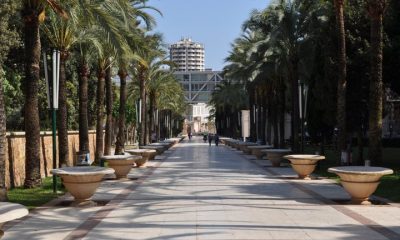
 Costa Blanca2 weeks ago
Costa Blanca2 weeks agoBenidorm studies the temperature of its streets to understand “heat island effect”
-

 News2 weeks ago
News2 weeks agoThe Generalitat presents the road map for the widening of the CV-95 between Orihuela and Torrevieja
-
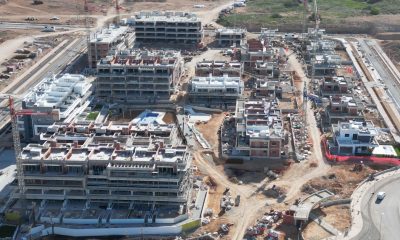
 Costa Blanca2 weeks ago
Costa Blanca2 weeks ago44% of homes in Alicante province were purchased by foreigners
-
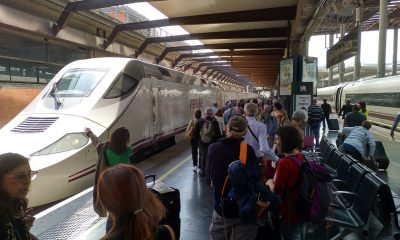
 Costa Blanca2 weeks ago
Costa Blanca2 weeks agoCompetition on Spain’s railways is driving down prices
-
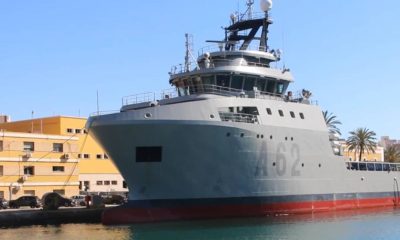
 Costa Blanca2 weeks ago
Costa Blanca2 weeks ago‘Cartagena’, the new electric Navy ship
-

 Costa Blanca2 weeks ago
Costa Blanca2 weeks agoCouple arrested for a marijuana plantation with 481 plants hidden in their home
-
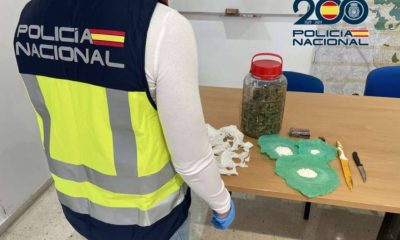
 Costa Blanca2 weeks ago
Costa Blanca2 weeks agoFour minors arrested for smuggling drugs on a school trip
-

 Costa Blanca2 weeks ago
Costa Blanca2 weeks agoAlicante port gets an electric boat for cleaning the water surface



